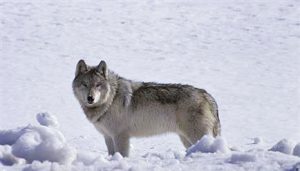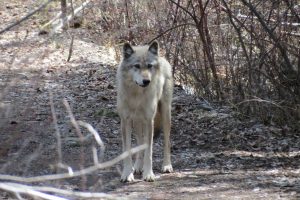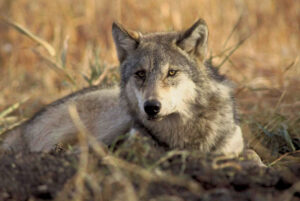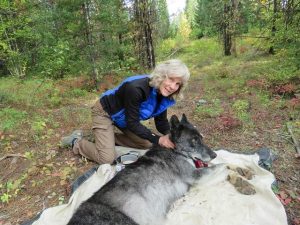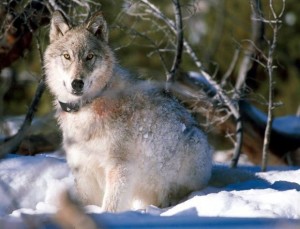HELENA – Montana Fish, Wildlife & Parks will prepare an environmental impact statement (EIS) and conduct public scoping on a proposed action to develop a new wolf management plan.
The 2003 Montana Gray Wolf Conservation and Management Plan and associated EIS were developed 20 years ago. Since then, new, and improved research, management tools and methods have been developed and incorporated into Montana’s gray wolf management strategy; however, they are not described in the 2003 Wolf Plan. Gov. Greg Gianforte asked FWP to create a new wolf management plan with broad public engagement due to the interest in wolf management across the state.
The new wolf management plan will include the latest science surrounding wolf management, better transparency on wolf management, and be easier to update in the future. More specifically, the new wolf plan will accomplish the following:
- Articulate contemporary updates in wolf-related research;
- Describe new and available wolf management tools and methods employed by FWP;
- Provide FWP with the flexibility needed to incorporate new wolf management science and tools, as they become available;
- Describe the public engagement process as new information related to evolving wolf management strategies in Montana becomes available.
FWP invites comment identifying potential significant environmental issues associated with the proposed action of creating a new wolf plan and in determining the appropriate scope of the EIS. Public input received during the scoping period will help FWP staff determine public interest, identify potential issues that would require further analysis, and may provide further insights for creating the new wolf plan.
FWP will conduct two virtual public scoping meetings for this EIS; public input will also be taken during these meetings. The meetings will be held:
- April 4 from 6-8 p.m.
- April 11 from 6-8 p.m.
Login information will be posted on the FWP website before the meetings.
The deadline for scoping comments is April 22. These comments will be used to help shape the new plan and analysis. FWP will open public comment for the draft EIS and draft plan once they are completed.
Scoping comments can be emailed to fwpwolfplaneis@mt.gov or mailed to:
Attention: 2023 Montana Wolf Management Plan EIS
Montana Fish, Wildlife & Parks
Wildlife Division
1420 East Sixth Avenue
Helena, MT 59620
For more information, visit https://fwp.mt.gov/aboutfwp/public-comment-opportunities/wolf-eis-scoping
